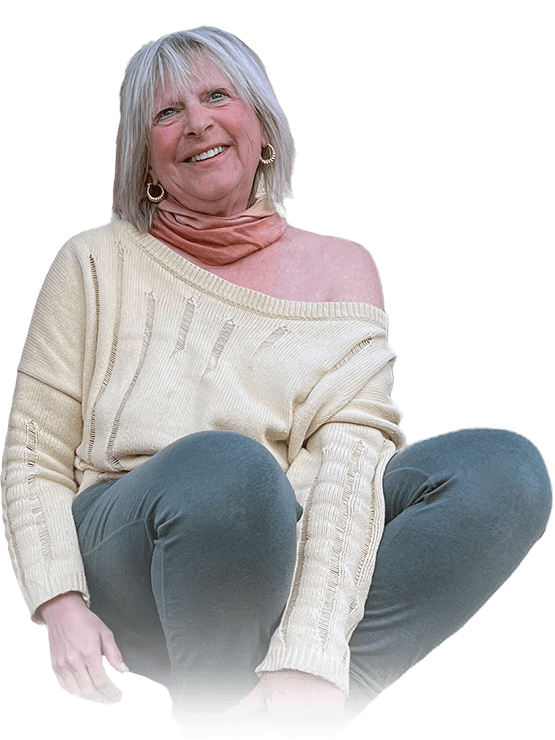Author
Educator
My work is focused on solutions to help students, educators, administrators and community members and their organizations/institutions thrive, not just survive.


In this time of a pandemic and uncertainty of every sort and in every corner of our existence, we need to determine risk at the global, national, regional, local and personal levels. I want to focus here on personal risk taking. And, I can state my conclusions up front: people are very different in calculating and acting with respect to risk and even when some folks seem over-cautious and others too cavalier, we need to recognize that in time of great stress and abundant things out of our personal control, folks will react differently; and, we need to be considerably more tolerate than we might otherwise be of people’s behaviors, most especially those who live with us. In other words, don’t push people to do what you do, to buy what you buy to protect yourself and to travel/shop/stay in as you do.
To elaborate, let me give some examples and then turn to explanations. There are folks in today’s world who wash their hands multiple times a day, even when they are not coming and going from their home. (Not talking about OCD here). There are folks who spray down every food item that comes into their home. There are folks who wear gloves (a new set) when they are outside and they carry their own bottle of disinfectant, spraying everywhere as they walk. There are those that won’t get in an elevator, even if no one else in there. Pushing buttons feels risky. They are people who won’t even think about flying or taking a train or getting on a subway/Metro or a bus or into a taxi. (Forget here about the confounding issues for those healthcare workers who must take public transportation to get to work.) There are individuals who will not enter a supermarket, even if there are masks and distancing and cart wipe-downs. There are individuals who put the clothes they wear into the washer every time they come home; so, if one has a dog, one is wearing five sets of clothes a day. Lots of wash. Oh, there are those who have their mail and packages sit untouched outside the door for 48 — 72 hours in case there are virus spores on them that haven’t yet died.
Individuals confront other kinds of risk: does it matter if their children actually attend online school? Who will know if they actually do the work or their parents do it for them? Should we send a deposit to the college our child wants to attend even though it is miles away and we are unclear as to whether/how it will open? Should we visit aging parents so at least we see them before they pass away, waving through glass at a nursing home? Should we go to the hospital if we feel chest pain or assume it is stress induced or indigestion? Should we just deal with that nagging toothache and not visit a dentist? Should we quarantine a pet or a child that could have COVID, although not yet tested and likely unable to get a test? Should we get an x-ray of that turned ankle or just wait and see if it is sprained as opposed to broken?
Almost in counterpoint, there are other individuals sitting on the opposite side of the spectrum. These folks will go to beaches; they will bike on crowded park pathways, cycling around pedestrians. They will have masks but they will be dangling around their necks loosely. They will walk their dogs and let other humans pet their dog and let their dog play with other dogs. There are folks who still have get-togethers with friends without quite social distancing as required. Some have even created quarantine communities where they moved in and now live together and don’t social distance. Some folks will walk into stores without sanitizing the cart they are holding gloveless and then they will carry out paper or plastic bags they will not wipe off.

We tend, whether we are on one or the other side of the risk calculus or somewhere in between to make value judgments about those who are not doing what we are doing. We are critical of those (one way or another) who act overly cautious (not in their eyes) or cavalier (not in their eyes). We tend to say: wow, that person is really taking this too seriously or this person is really not taking this seriously enough. Collectively we ask: what is wrong with person A or B or C?
For starters, risk is very personal and is deeply grounded in our life experiences, our own internal sense of balance and our pre-pandemic approaches to risk and lack of control. So, while it is easy to view behaviors in the context of the pandemic only, we do way better if we realize that the pandemic risk behaviors are not sui generis. They are linked to previous approaches and behaviors — whether conscious or not, whether recognized or not. And, they are individualized; we don’t have — except in the broadest sense — identical risk calculi. So, those with a need for neat closets and color coordinated drawer contents will find themselves in a different position than those with Fibber McGee closets.
Next, it is useful to distinguish between two critical terms (and it is this distinction that has made a world of difference for me both in terms of my own behavior and that of those near and dear to me): there is risk assessment on the one hand (namely calculating how risky a particular situation actually is in real terms on both objective and subjective measures) and then there is risk tolerance on the other hand (the degree to which we can and will accept risk after having assessed it to be high or low or somewhere in between- a subjective standard).
Let me explain. We actually assess risk and our tolerance— but oft times without awareness or without distinguishing between the two.

If we can differentiate between risk assessment and risk tolerance and if we can recognize that different people approach both terms differently, then we can both evaluate our own choices and those of others with greater ease. We can accept that different people will and can measure risk differently. That does not make them wrong or indifferent or overattentive. No, what it means is that we have our own individualized approaches to risk — and those are part of who we are. We are, after all, unique individuals with lots of nuances as to who we are and how we got there and what matters to us. And we don’t normally (we do now) make value judgments about these differences alone. We tolerate folks who only wear black clothing and we tolerate those for whom bright colors are the norm. We don’t criticize those who always wait for the walk sign when crossing the road; we don’t look down on those who prefer dinner for 2 or 4 rather than dinner for 24. We don’t criticize the person who wears all sorts of costume jewelry or wigs for fashion or the person who prefers to go au natural.
Now, let’s look at food shopping in greater depth using the terms risk assessment and risk tolerance. This will give us a way better sense of how these terms play out in real life, in real time. Now.
When we go food shopping, we know there are risks but we also know that many food stores (not all) are mitigating those risks: they are cleaning the premises, they are disinfecting carts, workers are tested, workers are wearing masks and glove when they handle food, there are one-way aisles, there are limitations on the number of people in a store, and there are special hours for those more vulnerable (whether due to age or other factors like pre-existing conditions).
And, we know we can take our own precautions: we can wear gloves and masks (different kinds of masks are a whole other risk story); we can carry disinfectant and wash down the carts and the bags and every food item. We can even wipe down the car door lest someone brushed up against it while parked and once home, we can toss our clothes in the washing machine or laundry pile.
But, there are folks who still won’t go food shopping. They don’t want to be around other people in such close proximity. Social distance isn’t good enough, even assuming that it is working. The health of the store workers scares them. They don’t like the idea of the checkout with things on a countertop and they don’t like the inside of carts — especially metal ones. And, they don’t know who put the food out on the store shelves the evening before and whether that person was or those persons were healthy. And how about the folks delivering the food to the store? What do we know about them?
Now, there are risks to food shopping for sure. That is the risk assessment piece. And, the risks can be mitigated, not eliminated. And, in the real world, we need to accept that nothing is 100% safe. With that in mind, some folks can tolerate the risks of food shopping while others cannot. And, that does not mean that the shopper types are bad or less cautious and that the non-shopper types are too uptight or too careful. It has to do with what kind and how many risks we can tolerate — and this is where risk tolerance comes into play.
Also and importantly, we are not necessarily “consistent” as to how we both assess and tolerate risks. The person who can’t go food shopping could easily walk the street with a mask and let others pet her dog. The person who can food shop might not be able to drive long distances to a new location because of all the uncertainties along the way (where to pee, where to eat, who will be encountered). The person who can food shop may also be the person who washes their hands 20 times a day.
Bottom line, we each have our own risk assessment (more objective to be sure) and risk tolerance (truly subjective). And, we need to recognize that where ever we come out on the risk assessment/tolerance scales is not a question of good or bad or right or wrong. Instead, it is a matter of what, in a pandemic world, we can comfortably live with (and live without). We are in uncertain times and uncertainty is something with respect to which we all act and feel differently. Even members of the same family, living in the same house, can have vastly different approaches to these issues of daily life — that beg for us to risk assess and determine risk tolerance all the time.
So, here’s my advice: let’s cut everyone a little slack now in these pandemic times. Let’s recognize that what feels right for one person may feel terribly wrong for another. And that’s ok. At the end of the day, we can each make our choices so we can live as comfortably as possible in a world in which our control is evaporating.
And, that’s not a bad thing to learn during a pandemic. And, it might just be one of those things that has value post-pandemic. Only time will tell on that.
Note: This article originally appeared in Medium at: https://karengrossedu.medium.com/our-approach-to-risk-differs-dramatically-even-within-one-family-8eb32a1bdd90